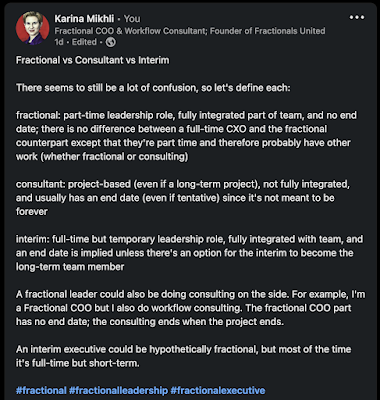How Fractional Leaders Can Help Your Business Survive Economic Hard Times (Natalie Stones)
With the current economic climate, many businesses are struggling to maintain their operations and stay afloat. For small businesses and startups, this is especially true as they often don’t have the resources or flexible workforce to quickly pivot to meet new challenges. However, there is an option that many companies may not be aware of—hiring fractional leaders. What is a Fractional Leader? A fractional leader, also known as a “part-time C-suite executive” is an embedded senior leader who works part-time for your business on an open ended basis. A fractional leader can provide experienced guidance in times of difficulty and help you navigate through economic hard times better than ever before. Learn more about what defines a Fractional in our prior post ! Some of the most common Fractional Leaders include: Chief Marketing Officers Chief People and Talent Officers Chief Operations Officers Chief Finance Officers Chief Strategy Officers Chief Sales and Business Development Office...
.png)

